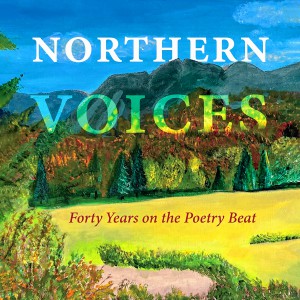The scoop on soil
| Published: 09-20-2021 9:52 PM |
We often call it dirt, but the soil beneath our feet, in our gardens and under the plants of the forests and fields is far more than grit and mud. It is comprised of a complex mix of living and non-living elements that create the foundation for all living things.
Soil scientists, and anyone who enjoys digging deep (which I highly recommend), knows that soil consists of layers, or horizons. The layers vary in depth and composition, depending on where the soil is.
The top layer, known as the O horizon, is composed almost entirely of organic matter. When leaves, twigs, grasses and other plant residue fall to the ground, they begin to decompose, delivering material back to the soil which helped the plants grow.
Beneath that “duff” is the A horizon or topsoil which is a combination of the decomposing organic matter from the O horizon, mixing with minerals from below. Roots are usually abundant in this layer because it provides the most favorable layer for plant growth. In much of New Hampshire, this dark brown or black layer is only a few inches thick, but in the mid-west where prairies were the dominant landscape, the A horizon can be 2 feet thick, or more. No wonder our ancestors went west to farm!
In most soils, the subsoil, or B horizon is next and is where the organic matter, nutrients and other chemicals have leached down and accumulate from the O and A. Roots are common in this yellowish-brown layer, but not nearly as abundant as in the A horizon.
The C horizon is the lowest level. Also known as substratum or the parent material, it has little organic material, few if any roots and is mostly made up of minerals from the bedrock on which it sits. It is generally the thickest section and is typically brownish-gray in color.
Within the layers, particularly the upper ones, there is abundant life. It is said that a single teaspoon of soil can hold up to 1 billion bacteria, several yards of fungi filaments, thousands of protozoa and scores of nematods. Those are just the things that are too small to see. Add in worms, millipedes, sow bugs and other invertebrates and a clump of soil is like a miniature city.
Keeping all of those organisms alive and doing their jobs is vital to maintaining healthy soil, which in turn is essential for the growth of vigorous plants. This happens routinely in uncultivated environments. Minimizing disturbance, and mimicking natural systems is a great way to enhance soil health. However, in our gardens and yards, the soil has likely been disturbed enough that it may need some amendments to enhance plant growth.
Article continues after...
Yesterday's Most Read Articles
 N.H. Educators voice overwhelming concerns over State Board of Education’s proposals on minimum standards for public schools
N.H. Educators voice overwhelming concerns over State Board of Education’s proposals on minimum standards for public schools
 “It’s beautiful” – Eight people experiencing homelessness to move into Pleasant Street apartments
“It’s beautiful” – Eight people experiencing homelessness to move into Pleasant Street apartments
 Voice of the Pride: Merrimack Valley sophomore Nick Gelinas never misses a game
Voice of the Pride: Merrimack Valley sophomore Nick Gelinas never misses a game
 Matt Fisk will serve as next principal of Bow High School
Matt Fisk will serve as next principal of Bow High School
 Former Concord firefighter sues city, claiming years of homophobic sexual harassment, retaliation
Former Concord firefighter sues city, claiming years of homophobic sexual harassment, retaliation
 A trans teacher asked students about pronouns. Then the education commissioner found out.
A trans teacher asked students about pronouns. Then the education commissioner found out.
The best way to determine if the soil might need some help and thus increase the chance for success for plant growth is to do a soil test. Testing soil is much easier than most people think. The UNH Extension website has all the information you need:extension.unh.edu/agriculture-gardens/pest-disease-growing-tools/soil-testing-services. Fall is actually a great time to do a soil test because the lab is not as busy as it is in the spring, so the turnaround time for your results is likely to be shorter (only about 2-3 weeks). By getting results now, you can use that information to plan for whatever amendments you might need for your garden or landscape in the spring.
Something else you can do at this time of year which will help your soil and the organisms that live in and on it is to minimize your yard and garden clean up. Leaving soil covered (just like in the forest or field) is a way to minimize loss of soil from wind or water erosion. It also provides shelter for native insects and insulation for plant roots. Most of us are drawn to rake, blow or remove leaves and plant debris at this time of year. But leaving at least some of that “litter” adds to soil health and the overall richness of the ecosystem under and around our feet. So remember, it’s not just dirt down there, and treating the soil with care is important for the plants and the planet.
]]>


 Community Players of Concord present newest adaptation of Pride and Prejudice
Community Players of Concord present newest adaptation of Pride and Prejudice Concord Monitor editor Mike Pride’s final book explores the lives, works of Northern New England poets
Concord Monitor editor Mike Pride’s final book explores the lives, works of Northern New England poets Active Aging: John Burke of Peterborough celebrated his 81st birthday with 81 hikes up Pack Monadnock
Active Aging: John Burke of Peterborough celebrated his 81st birthday with 81 hikes up Pack Monadnock Vintage Views: From darkness to light
Vintage Views: From darkness to light
